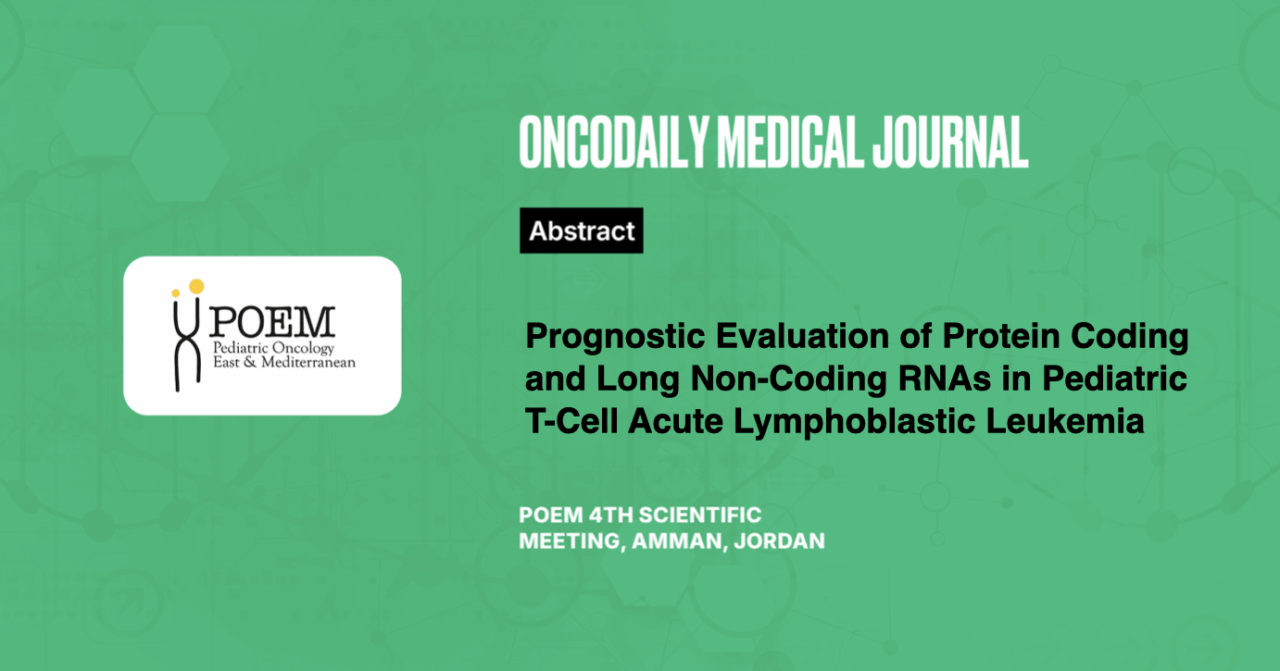Prognostic Evaluation of Protein Coding and Long Non-Coding RNAs in Pediatric T-Cell Acute Lymphoblastic Leukemia
Abstract
Introduction: T-cell acute lymphoblastic leukemia (T-ALL) is a genetically heterogeneous disease with poor prognosis and inferior outcome. Even with highly intensified therapy, T-ALL patients have a higher rate of relapse with poorer post-relapse survival. Although immunological, cytogenetic, and genomic approaches have been extensively utilized for understanding the biology of the disease, their impact on patient prognosis remains challenging. In the current study, we aimed to characterize the coding and long non-coding (lncRNA) RNA landscape in pediatric T-ALL and evaluate their clinical relevance.
Methodology: RNA sequencing was performed on pediatric T-ALL patient samples (n=25). Differential expression analysis was performed to identify dysregulated mRNAs and lncRNAs. Validation of candidate RNA was conducted using real-time PCR.
Results: The median age of the patients at diagnosis was 7 years with male to female ratio of 11.5:1. RNA sequencing revealed a definitive fusion event in 14 cases (56%) with STIL::TAL1 in 4 (16%), followed by NUP21::ABL1, TCF7::SPI1, ETV6::HDAC8, LMO1::RIC3, DIAPH1::JAK2, SETD2::CCDC12 and RCBTB2::LPAR6 in 1 (4%) case each. Significant aberrant expression was noted in RAG1 (64%), RAG2 (80%), MYCN (52%), NKX3-1(52%), NKX3-2 (32%), TLX3 (28%), LMO1(20%), and MYB (16%) genes. Clinically significant association of a better EFS and OS (p=0.01) was noted with RAG2 over-expression at a median follow-up of 32 months, while a poor EFS (p=0.041) and high relapse rate (p=0.045) were observed with MYB over-expression. Besides coding gene expression, seven lncRNAs, LINC01221, PCAT18, LINC00977, RP11-620J15.3, RP11-472G21.2, RP11-472G21.2, and CTD-2291D10.4, were highly expressed in T-ALL patients, with RP11-620J15.3 correlating significantly with better overall survival (p=0.0007) at a median follow-up of 32 months.
Conclusion: Overall, the present study demonstrates the expression signature of coding and noncoding RNAs with prognostic implications in T-ALL and is a salient addition to current transcriptomics data sets available in T-ALL.





